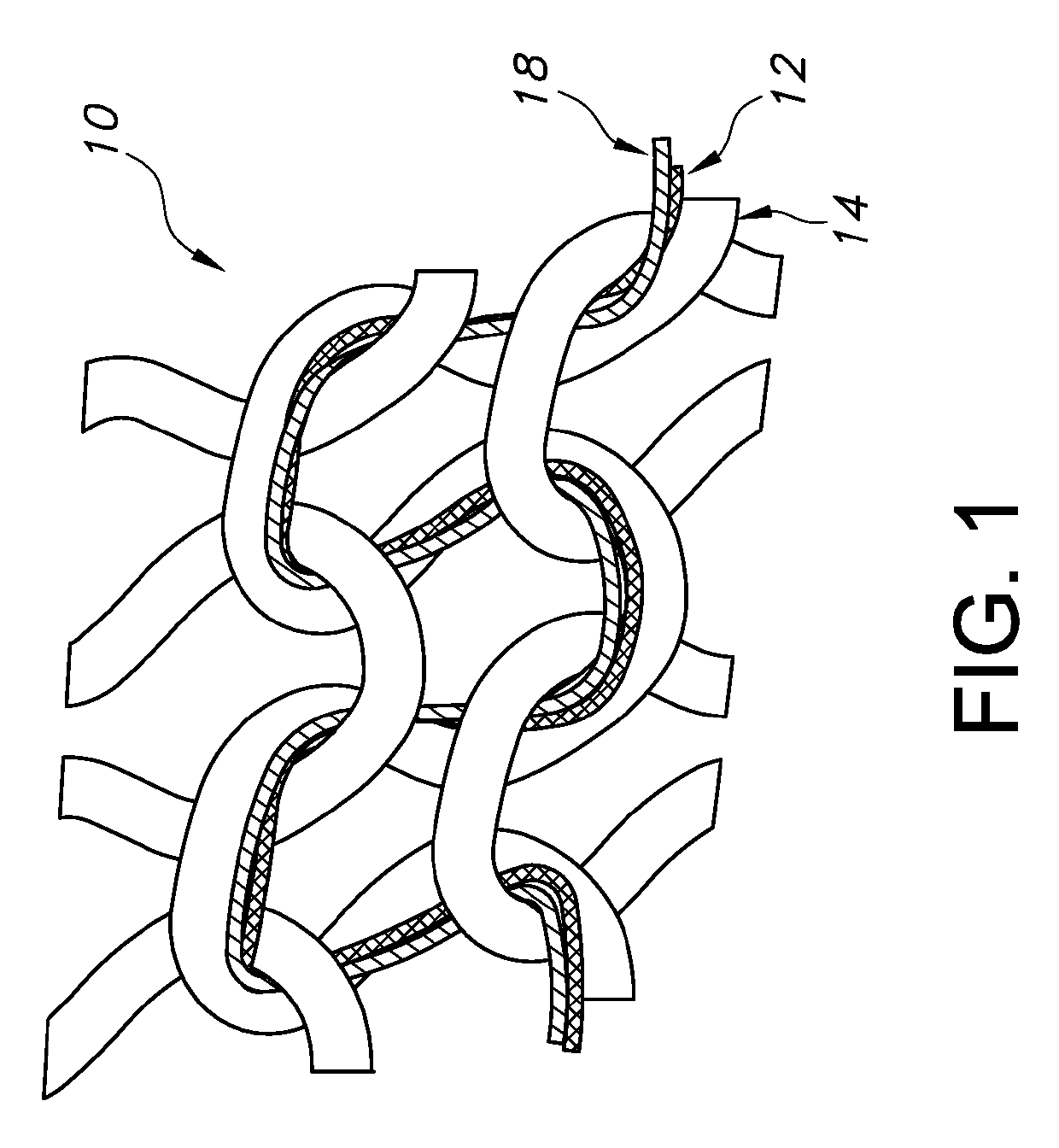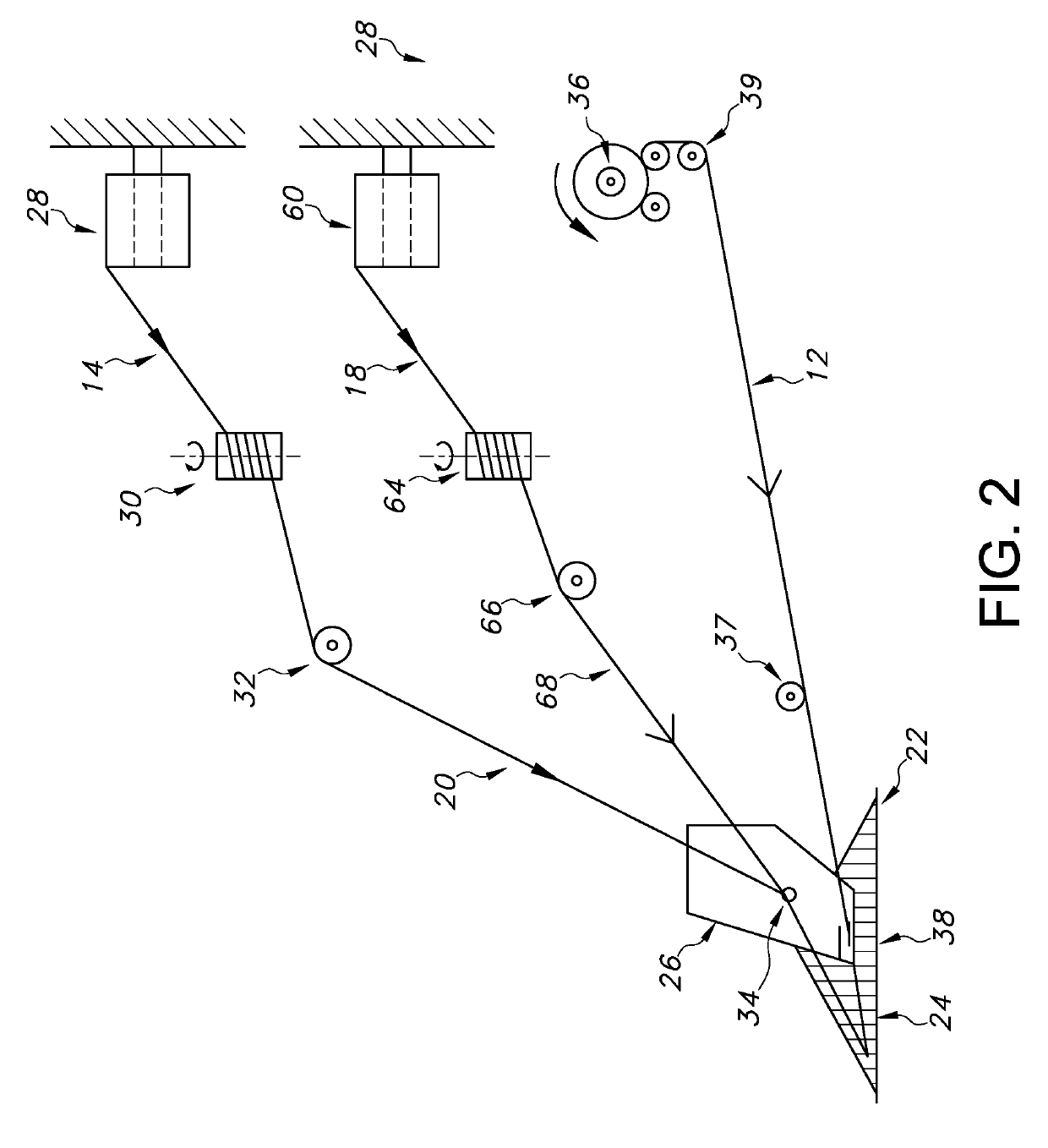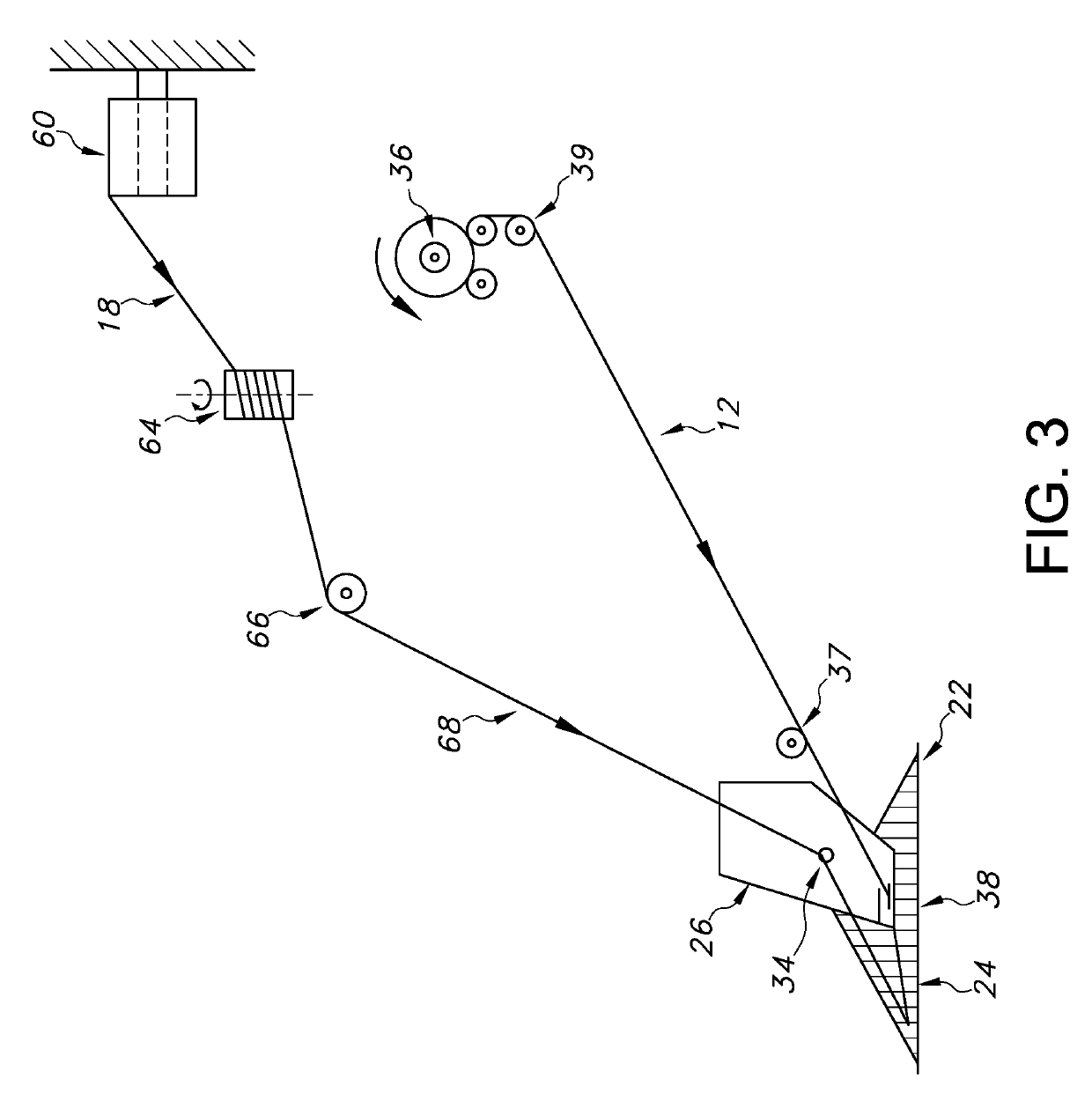Stretch circular knit fabrics containing elastomeric fiber and polyester bi-component filament, garments made therefrom and a method of making same
a technology of elastomeric fiber and polyester bi-component filament, which is applied in the direction of knitting, textiles and papermaking, ornamental textile articles, etc., can solve the problems of single elastic fiber generally incomplete, knit stitch rearrangement, and single elastic fiber recovery, and consumers may see the effect of permanent deformation or ‘bagging’ of single elastic knit fabrics
- Summary
- Abstract
- Description
- Claims
- Application Information
AI Technical Summary
Benefits of technology
Problems solved by technology
Method used
Image
Examples
example 2
rsey Fabric with Two Different Elastic Fibers
[0121]This sample had the same fabric structure as in example 1C with the exception of the incorporation of 50D LYCRA® T400® fiber. The fabric contained two elastic yarns in accordance with the present invention: 40D LYCRA® spandex fiber and 50d / 34f LYCRA® T400® polyester bi-component filament. The cotton yarn was 50 Ne count yarn. Table 1 summarizes the test results. It is clear that this sample had good stretch (length 85.3%×width 116.4%). The fabric also has low shrinkage. The fabric also has improved recovery power (length 205.9%×width 146.2%). Adding polyester bi-component filament significantly increased the jersey fabric holding force and limited the extra elongation in width direction, while at same time increasing the recovery force in both directions. Fabrics demonstrated high stable dimension and strong shape retention ability. The fabric contained 4.6% LYCRA® fiber, 28.0% LYCRA® T400® bi-component fiber and 67.4% cotton.
example 3
yer Knit Containing Double Elastic Fibers
[0122]This sample had the same fabric structure as in example 2 with the exception of the denier of LYCRA® T400® fiber: 40D T162B LYCRA® fiber with 2.7× draft and 75d / 34f LYCRA® T400® fiber with 1.10× draft was used. The hard yarn was 50 Ne 100% cotton ring spun yarn with single jersey stitch structure. The finished fabric had a weight of 6.1 oz / yard2 and 84.5% and 118.3% stretch in the length and width direction, respectively. The fabric recovery power was 314.6 grams×214.6 grams in length and width direction. As shown, the high denier of LYCRA® T400® fiber helped to increase the fabric recovery force in both directions. The fabric contains 7.6% LYCRA® fiber, 37.8% LYCRA® T400® bi-component fiber and 54.6% cotton.
example 4
yer Knit Containing Double Elastic Fibers
[0123]This sample had the same fabric structure as in example 2 with the exception of the denier of LYCRA® fiber: 70D T162B LYCRA® fiber, 2.7× draft and 1.05× draft for 70D LYCRA® fiber and 75d / 34fLYCRA® T400® fiber were used. The hard yarn was 50 Ne 100% cotton ring spun yarn with single jersey stitch structure. The finished fabric had a weight of 6.5 oz / yard2 and 100.8% and 97.3% stretch in length and width direction, respectively. The fabric recovery power was 290.2 grams×249.7 grams in length and width direction. As shown herein, the high denier of LYCRA® fiber increases the fabric recovery force in both directions. The fabric contains 14.4% LYCRA® fiber, 26.3% LYCRA® T400® bi-component fiber and 59.3% cotton.
PUM
| Property | Measurement | Unit |
|---|---|---|
| break elongation | aaaaa | aaaaa |
| elongation | aaaaa | aaaaa |
| elongation | aaaaa | aaaaa |
Abstract
Description
Claims
Application Information
 Login to View More
Login to View More - R&D
- Intellectual Property
- Life Sciences
- Materials
- Tech Scout
- Unparalleled Data Quality
- Higher Quality Content
- 60% Fewer Hallucinations
Browse by: Latest US Patents, China's latest patents, Technical Efficacy Thesaurus, Application Domain, Technology Topic, Popular Technical Reports.
© 2025 PatSnap. All rights reserved.Legal|Privacy policy|Modern Slavery Act Transparency Statement|Sitemap|About US| Contact US: help@patsnap.com



